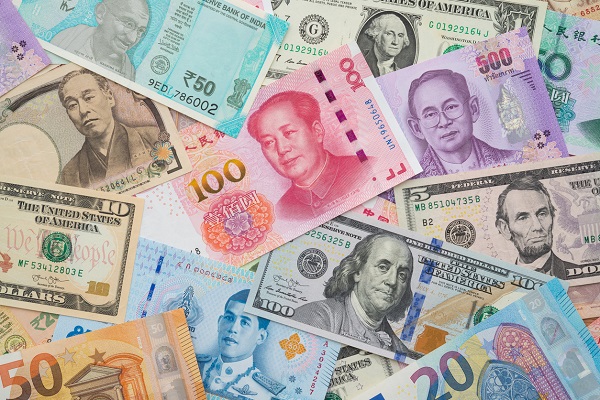.png)
Richard is an independent financial journalist who tracks financial markets and macroeconomic developments
August 5, 2025 at 3:30 PM IST
India’s currency is sliding just as its trade outlook worsens. Far from signalling fragility, that drop may prove a timely shock absorber.
The rupee has fallen 2.3% against the dollar since early June, resuming a broader decline that began late last year. A brief rebound in March and April, helped by a softer dollar and resilient domestic growth, has faded as headwinds return: tight US monetary policy, firm crude prices, and geopolitical risks including secondary sanctions due to Russia trade links. The currency now trades near its long-term average annual depreciation of 3.2%.
The timing matters as India’s exporters face formidable pressures. Washington has slapped a 25% tariff on a wide range of goods and signalled further penalties. Tariff exemptions have narrowed to favour sectors like pharmaceuticals, semiconductors, and critical minerals. India’s shipments to the US are projected to shrink by almost 30% in 2025–26, to $60.6 billion from $86.5 billion a year earlier.
A weaker rupee offers partial relief. Depreciation makes Indian goods cheaper overseas, cushioning margins in sectors like textiles, engineering, and IT services. For software exporters, who bill largely in dollars, the benefit is immediate: local-currency revenue rises
The macro impact is small but tangible. The Reserve Bank of India estimates a 5% rupee depreciation can lift GDP growth by around 25 basis points via a stronger trade balance. With headline inflation at 2.1% in June, its lowest since 2019, and core price pressures below 4%, the growth trade-off appears manageable. The inflationary spillover, roughly 35 basis points for a similar depreciation, remains tolerable.
Remittances provide an extra cushion as a weaker rupee boosts the local value of inflows from Indians abroad, propping up consumption in states such as Kerala, Maharashtra, and Andhra Pradesh. That support is timely, with high-frequency data showing sluggish urban demand, muted private investment, and restrained capital spending.
The risks are clear. Dollar-priced imports, especially oil, become costlier as the currency weakens, hurting consumers. Capital outflows could accelerate if the Federal Reserve stays restrictive, eroding the appeal of emerging-market assets. The central bank faces a delicate balance: intervening too heavily in the currency market risks draining liquidity and undercutting recent easing moves like rate cuts and cash reserve ratio reductions.
Yet that constraint also underscores the value of a market-led adjustment. A softer rupee acts as a stimulus without widening fiscal deficits or forcing aggressive monetary easing. It buys policymakers breathing space as they confront shrinking external demand and rising protectionism.
Currency weakness is not a strategy; it is an outcome.
But in a year shaped by tariffs, trade contraction, and volatile capital flows, it may be India’s unlikely ally. A cheaper rupee cannot erase the damage from US protectionism, but it can limit the pain and keep exports competitive.




